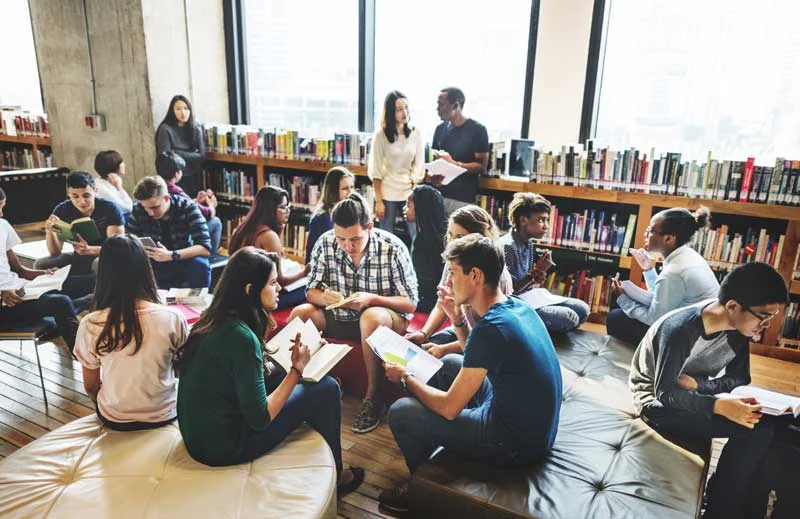
Temporary Accommodation in Melbourne
Finding a comfortable place to stay when you first arrive in Melbourne is an important step toward settling into your new life. With a variety of short-term accommodation options available, you can find one that fits your preferences and budget.
Temporary Accommodation Options

1. Short-Stay Apartments
Short-stay apartments are fully furnished, offering convenience and flexibility for new arrivals.
- Key Features: Many include services such as regular cleaning, and some even offer hotel-like amenities like room service.
- Location: Typically located in Melbourne’s inner and bayside suburbs.
- Price Range: AUD $120–$300 per night, with potential discounts for extended stays.
2. Private Houses and Apartments
Private landlords offer short-term rentals, ideal for those seeking a more homely atmosphere.
- Key Features: Fully furnished and ready to live in, but services such as cleaning are not typically included.
- Price Range: Varies based on location and property size.
3. Hotels and Motels
Hotels and motels provide convenient, short-term accommodation in Melbourne and surrounding areas.
- Availability: Options are available across the city and in major regional centres.
- Price Range: Broadly varies depending on the type of establishment and location.
4. Caravan Parks
For those venturing to regional areas, caravan parks offer affordable and family-friendly accommodation options.
- Key Features: On-site caravans or cabins with basic facilities.
- Price Range: Generally, under AUD $100 per night.
Tips for Booking Temporary Accommodation


1. Plan in Advance
Melbourne hosts numerous public holidays and international events, which can lead to increased demand for short-term accommodation.
Check key dates:- Victorian Public Holidays
- School Term Dates
- Major Events Calendar

2. Choose a Convenient Location
When selecting your accommodation, consider its proximity to:
- Public transport and major roads.
- Key areas of interest, including Swanston Institute’s campus.
- Amenities, services, and shopping areas.

3. Storage Solutions
If you need to store belongings being shipped to Melbourne, several self-storage options are available. Use tools like My Storage Finder to find facilities near your temporary home.

- Visit Victoria
- Aussie Apartments
- Mega Style Apartments
- Australian Explorer
- Serviced Apartments
- Airbnb Australia
Useful Websites for Accommodation Searches
The following platforms can help you explore short-term accommodation options:

Support for International Students
While Swanston Institute does not assist in securing accommodation, we encourage all students to thoroughly research and book temporary lodging before arriving in Melbourne. By planning, you can ensure a smooth transition to your new city.
For questions related to adjusting to life in Melbourne or navigating public services, Swanston Institute’s Student Support Team is available to provide general advice and connect you with helpful resources.

Start Your Melbourne Journey with Confidence
Settling into Melbourne starts with finding the right accommodation. From short-stay apartments to caravan parks, there are plenty of options to choose from. Take your time to explore the best fit for your needs and enjoy everything Melbourne has to offer.
For further assistance or guidance, feel free to reach out to our Student Support Team at support@swanston.edu.au.
Renting a House or Apartment in Melbourne
Finding a rental property in Melbourne is an exciting step in starting your new life. Whether you’re looking for a house, apartment, or shared accommodation, Melbourne offers a diverse range of rental options to suit your needs.
Housing Options in Melbourne
Types of Housing
Melbourne boasts a mix of old-world charm and modern convenience:
- Victorian and Edwardian-era homes: Classic and character-filled properties.
- Contemporary apartments and homes: Stylish and functional for modern living.
Locations and Prices
- Rental prices vary based on the suburb, property size, and proximity to public transport or amenities.
- Explore average rental costs through platforms like Consumer Affairs Victoria.
Finding a Rental Property
In Victoria, real estate agents manage most rental properties, though you can also rent directly from property owners.
Useful Platforms to Start Your Search
These websites feature properties ranging from entire homes to shared accommodations.How to Secure a Rental Property
- Attend an open house or schedule a private viewing.
- If you cannot inspect the property in person, appoint a representative to do it for you.
- Use this opportunity to check for any maintenance issues or features important to you.
- Attend an open house or schedule a private viewing.
- If you cannot inspect the property in person, appoint a representative to do it for you.
- Use this opportunity to check for any maintenance issues or features important to you.
- Duration of tenancy and rent amount.
- Terms regarding pets, repairs, and other conditions.
You are responsible for connecting essential utilities such as electricity, gas, water, and internet. Use services like Victorian Energy compared to find the best deals for your area.
A bond (usually one month’s rent) acts as a security deposit. It is held by the Residential Tenancies Bond Authority and is refundable at the end of your tenancy, minus any deductions for repairs or cleaning.
Before moving in:
- Inspect the property for damages or issues.
- Record these on the condition report and submit it to your landlord or agent. This step helps protect your bond when you move out.
Tips for Renting in Melbourne
Plan Ahead
Demand for rentals can be high in some areas. Start your search early to secure the best options.
Understand Your Rights and Responsibilities
Visit Consumer Affairs Victoria for detailed information on renting regulations.
Budget Wisely
Account for rent, bond, utility setup costs, and other living expenses.

Start Your Rental Journey in Melbourne
Renting in Melbourne is a great way to immerse yourself in the city’s vibrant culture and find a place to call home. By planning and understanding the rental process, you’ll be well-prepared to secure the perfect property for your needs.
For additional guidance or support, Swanston Institute’s Student Support Team is available to provide general advice on settling into Melbourne.
For further assistance or guidance, feel free to reach out to our Student Support Team at support@swanston.edu.au.
Buying a House in Melbourne
Purchasing a house in Melbourne is an exciting milestone, offering the chance to establish a home and invest in your future. Whether you’re planning to settle with your family or simply looking for a long-term base, Melbourne’s property market has a variety of options to suit your lifestyle.
Researching the Right Home
Explore Melbourne’s Suburbs
Melbourne is home to a diverse range of neighbourhoods, each offering unique characteristics and price points.
Suburb Selection
Research areas that align with your budget, lifestyle, and proximity to amenities. Neighbouring suburbs can vary significantly in property prices.
Past Sales Data
Access suburb-specific price trends through platforms like:
Finding Properties for Sale
Private Sale
- Purchase at the listed price or negotiate with the seller.
- A real estate agent usually facilitates transactions.
Auction
- Purchase by bidding against others in an open forum.
- Final sale prices often exceed the listed “selling range.”
In both cases, an offer becomes binding once both parties sign the Contract of Sale.
Steps to Buying a Home
- Home Loan Options: Explore financing through banks, credit unions, or mortgage brokers.
- Pre-Approval: Get pre-approved to understand your borrowing capacity and streamline the purchase process.
- Deposit Requirements: A deposit of approximately 10% is typically required upfront.
- Buyer’s Advocate: Consider hiring an advocate to help identify and secure a property.
- Conveyancer/Solicitor: Appoint a professional to handle legal paperwork and ensure compliance with regulations..
Settlement usually occurs 30-120 days after purchase. During this time, ownership officially transfers to the buyer.
Additional Costs to Consider
When budgeting, factor in the following expenses beyond the property price:
Stamp Duty
Based on property value, with potential surcharges for foreign buyers.
Loan and Mortgage Fees
Application fees, registration costs, and ongoing repayments.
Utility Connections
Fees for connecting electricity, gas, water, and internet.
Inspection and Legal Fees
Costs for building inspections, conveyancing, and legal services.
Insurance
Protect your home and belongings with home and contents insurance..
For detailed information, visit the Victorian State Revenue Office and MoneySmart.
Homebuyer Grants and Assistance
Australian permanent residents and citizens may be eligible for:
First Home Owner’s Grant
Assistance for first-time buyers.
Stamp Duty Concessions:
Potential reductions based on property value and residency status.
Connecting Utilities
Before moving in, arrange connections for electricity, gas, water, and internet. Visit:
- Essential Services Commission
- Victorian Energy Compare

Ready to Call Melbourne Home?
Buying a house in Melbourne is a rewarding experience, allowing you to secure a property tailored to your lifestyle and goals. With the right preparation and support, you’ll be well on your way to enjoying everything this vibrant city has to offer.
For additional information and guidance on settling into Melbourne, explore helpful resources like Consumer Affairs Victoria.
Would you like to add more localized advice or student-focused resources to this guide? Let me know!


















